Julian Day
Bio: Julian Day works across diverse media, from kinetic sculpture and neon scores to delegated performance and audio guides. They have presented work at MASS MoCA, Jewish Museum, Fridman Gallery, Bang On A Can, MATA, California Pacific Triennial, Tate Modern, Whitechapel Gallery, Huddersfield Contemporary Music Festival, Royal Academy of Music, Asia Pacific Triennial, Museum of Contemporary Art Australia, Adelaide Biennial of Australian Art, Australian Centre for Contemporary Art, Institute of Modern Art, Sydney Opera House and Liquid Architecture. Day has curated programs on ABC and BBC radio, published with The MIT Press and Cambridge University Press, and presented papers at Harvard, UCLA and Goldsmiths.
Thesis Exhibition
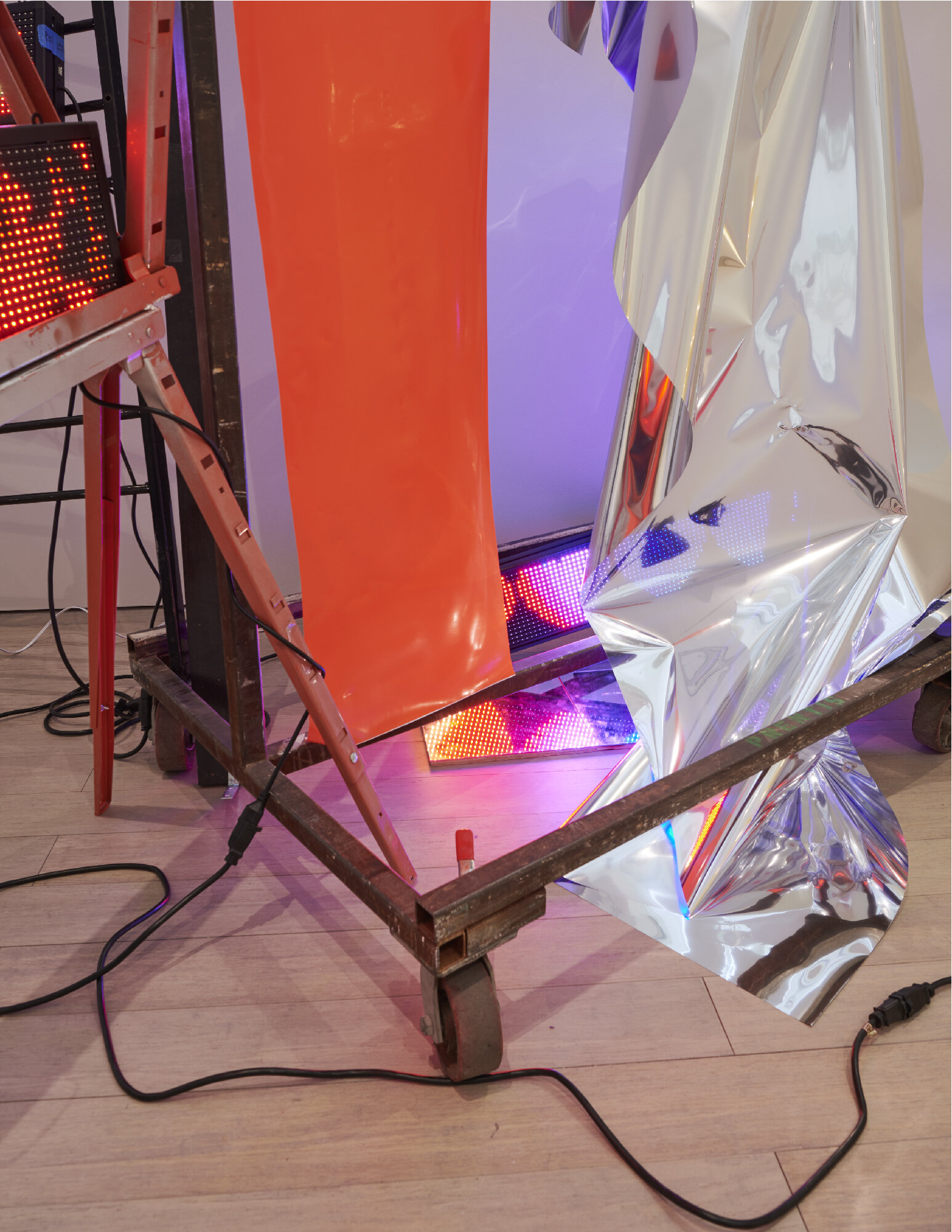
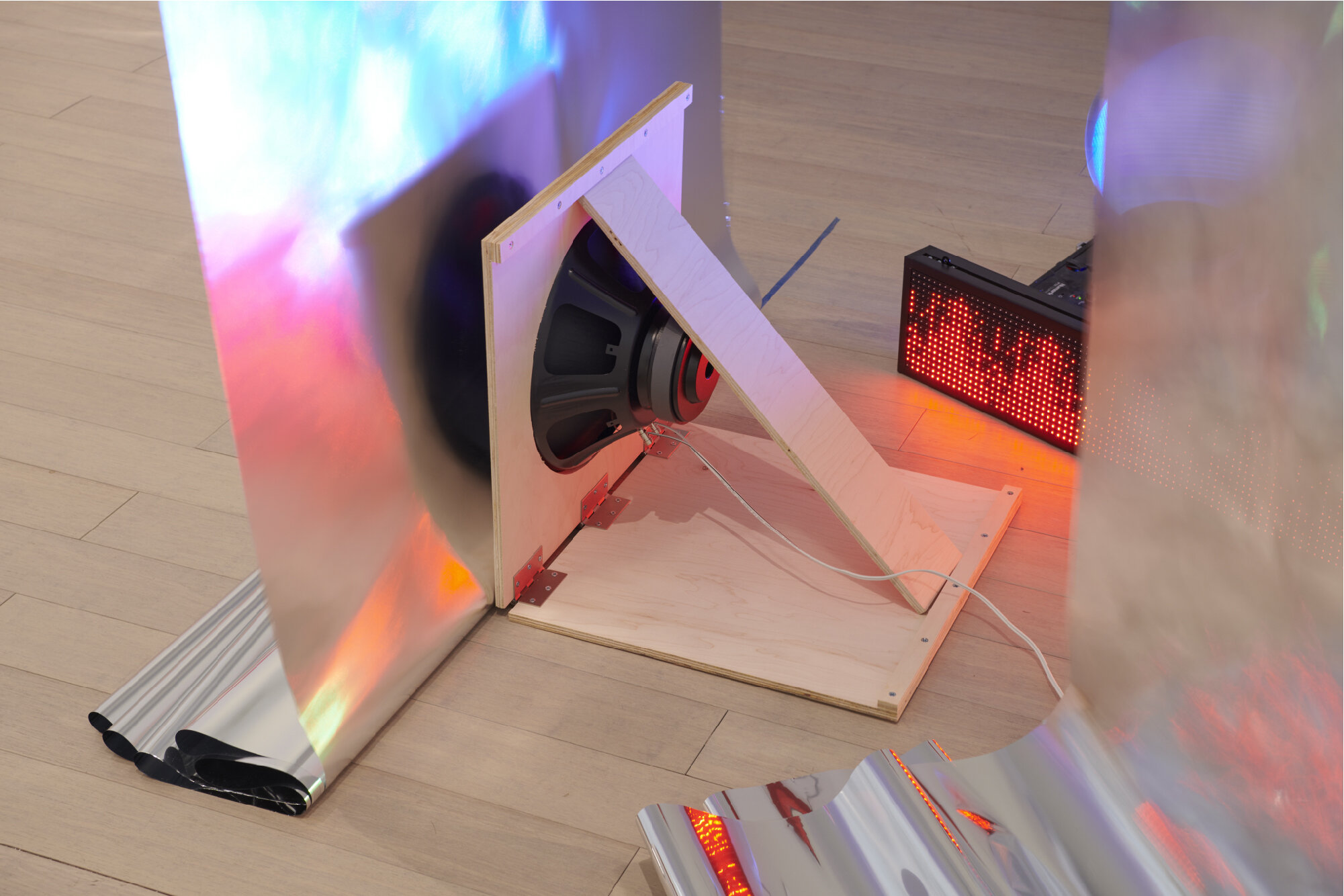
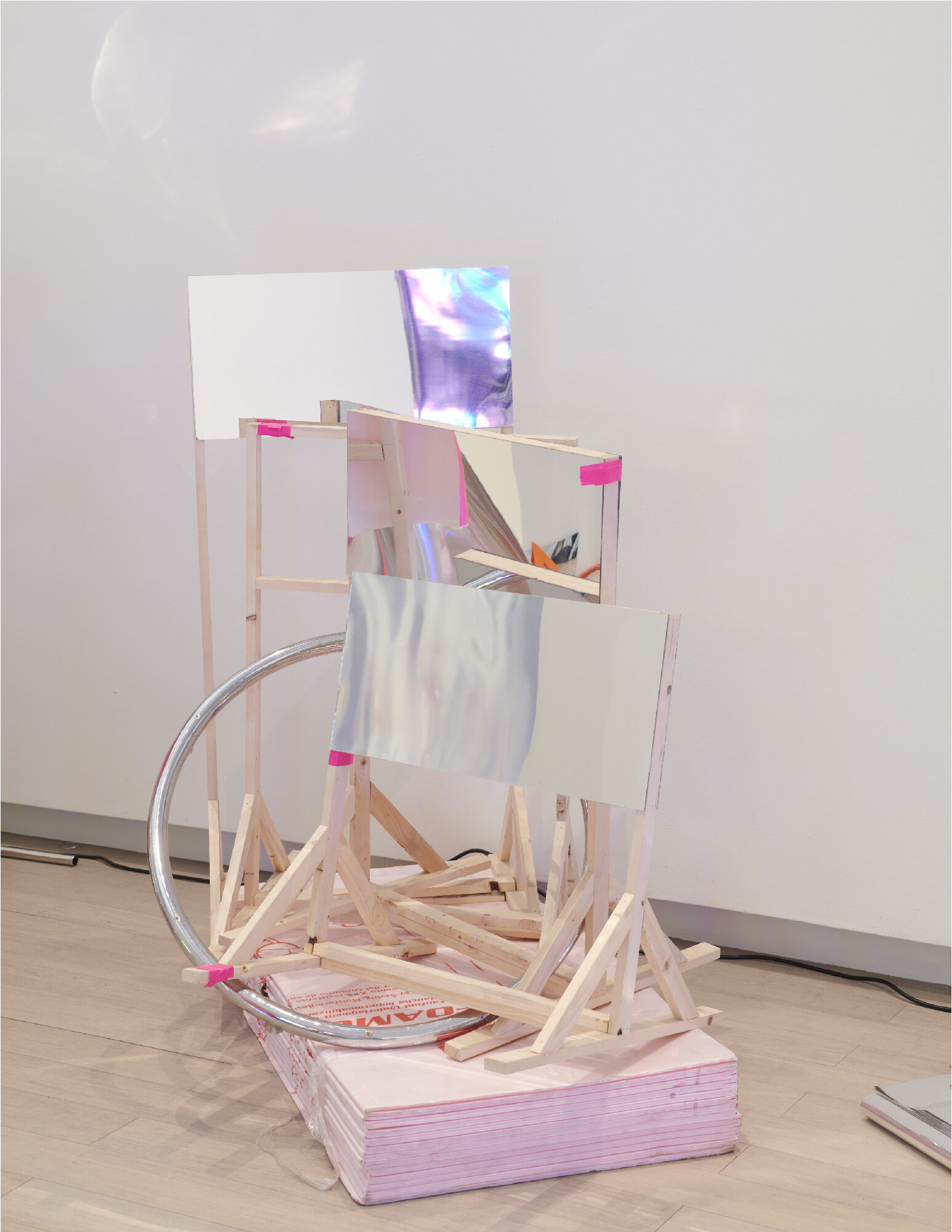
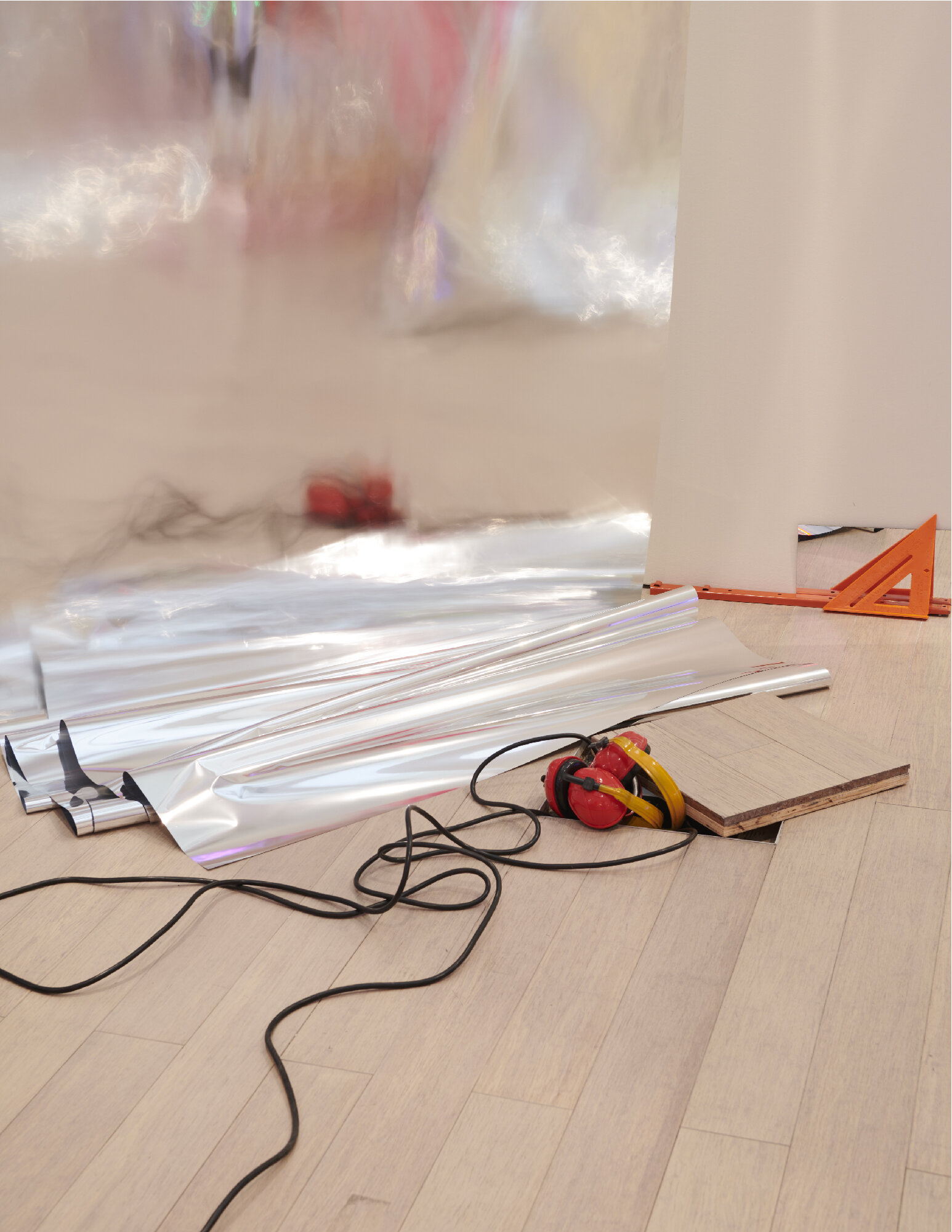
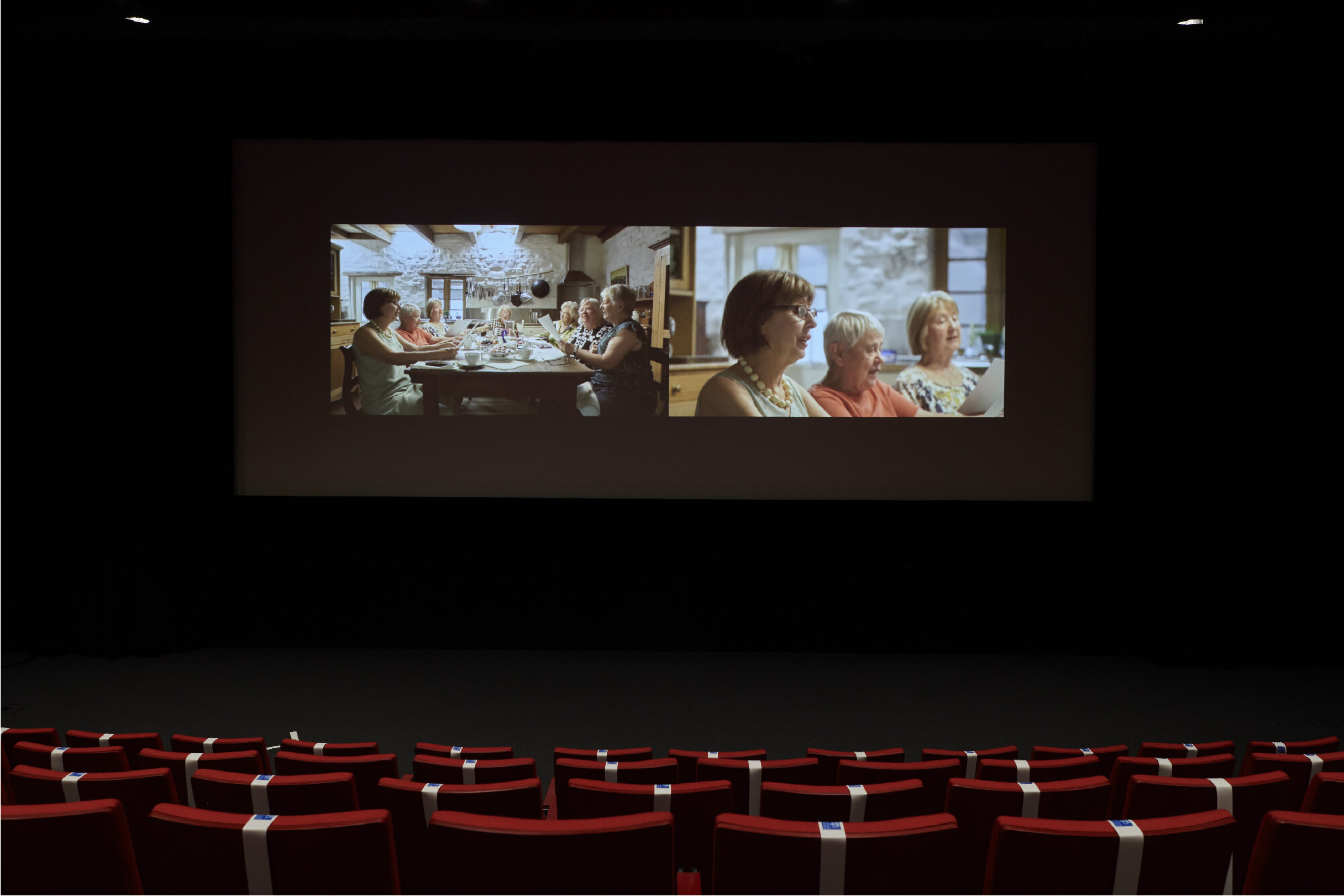


Artist Statement: My work addresses the mechanics of how we form, maintain and relinquish social bonds. As such, it is a growing treatise about power.
I typically corral sound’s radical promiscuity to articulate spatial politics through acts of civic commoning, drawing on my background as a composer and experimental musician. This is evident in my project Super Critical Mass in which participants co-devise interdependent sonic actions in public spaces such as libraries, parklands, and town halls. I also create work in which fetishized instruments such as vintage synthesizers draw out relational problematics, and a
body of sculptures in which subsonic sound enlivens reflective suspended membranes such as mirrored acrylic and PVC.
My MFA has prompted several new arcs. Firstly, how power dynamics can be parsed using quasi-legal structures. In (I Want) To Be Held, thirteen LED boxes reflect 2020’s inchoate turbulence using statutes about silencing and subjectivity, referencing canonical Fluxus text scores by La Monte Young and others. In Cohort, vocalists from Western Sydney, a destination for new immigrants, are contracted separately then aligned as a choir whose harmonies accord.
Secondly, enmeshing memoir and critique within video essays and performance lectures. My video International House, for instance, entwines personal ruminations on the loss of my father with an account of Leonard Cohen’s studies at Columbia six decades earlier, whilst 25 Words Or Less is an elliptical essay delivered as ‘straight’ spoken presentation within a classical concert.
Thirdly, how we store cultural knowledge within musical artifacts, whether objects or social structures. New Silesia highlights an underexamined history of diaspora and colonialism in rural Australia. A two-channel video centers on three German-singing choirs: the formal men’s Tanunda Liedertafel; the domestic women’s group Singkreis; and the Ntaria Ladies Choir, an Indigenous choir that sings Lutheran hymns translated by missionaries into Western Arrendte. Complementing this are newly built pipe organs and a non-hierarchical performance for members of the local community.
L to R: I Can't Give Everything Away (Dimensions Variable, Installation, 2021); New Silesia (30:00 minutes, Digital video, 2021)
New Silesia, 2020
two-channel HD video, Australia and New York
25:00 min
(I Want) To Be Held, 2020
LED boxes
